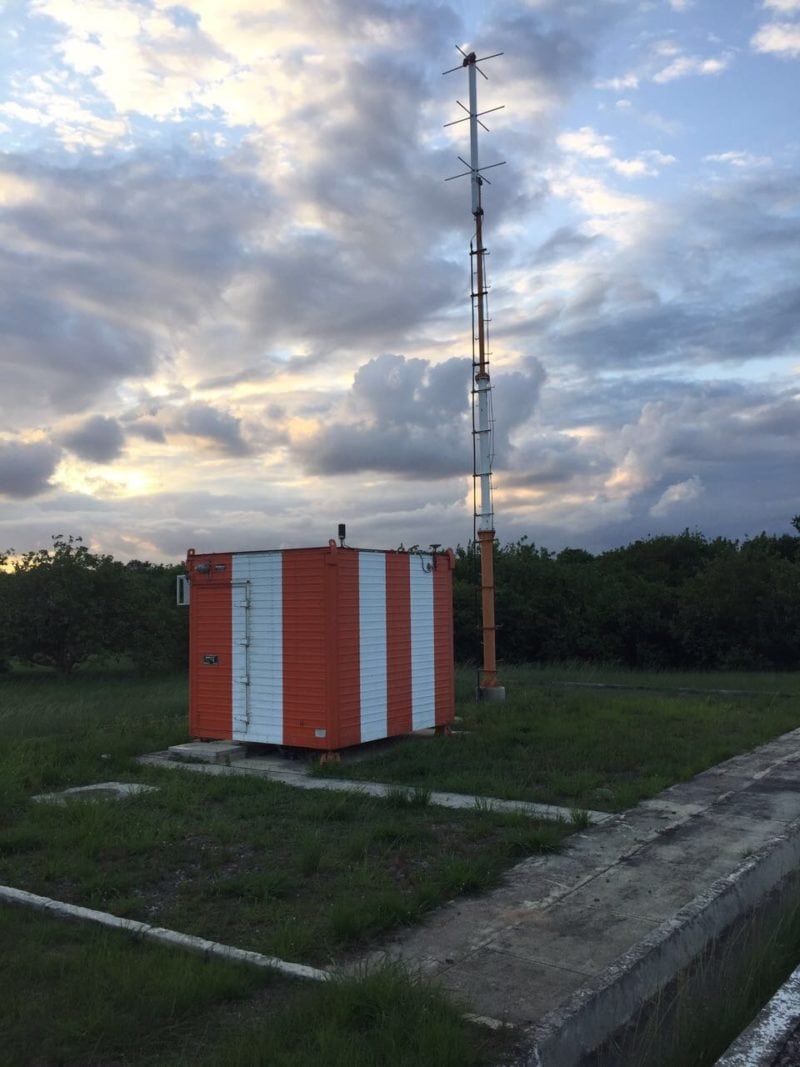
GBAS and VDB antenna installed at Galeão International Airport. Photo: DECEA.
An ongoing research effort featuring aviation government and industry representatives from Brazil and the United States will look to certify the use of a Ground Based Augmentation System (GBAS) station at Galeao International Airport in Rio de Janeiro within two years. The challenge will be determining how to facilitate the use of GBAS in the lower latitudes of South America which are more susceptible to ionospheric interference.
Galeao International Airport’s Honeywell SLS-4000 GBAS station was first deployed in 2011. Between 2011 and 2014, DECEA’s special flight inspection group (GEIV) carried out flight testing to evaluate the use of GBAS in Brazil and throughout South America. Now, the Department of Airspace Control (DECEA), the air navigation service provider for Brazil wants to move into the second phase of testing and provide a deeper analysis for the use of GBAS at Brazilian airports.
“This stage between 2011 and 2014 was the first phase of our work, in which we concluded that the GBAS could not be used in Brazil in the same way that it is operated in the Northern Hemisphere. Our mission now is, through this cooperation between Brazil and the United States, to deepen the analysis to identify possibilities that allow the use of GBAS in an intertropical region,” says Lieutenant-Colonel Santoro of DECEA.
According to DECEA, ionospheric interference can cause problems in the refraction of signals in the atmosphere especially in areas with lower latitudes, such as airports located in Brazil and throughout South America. The National Oceanic and Atmospheric Administration (NOAA) states that ionospheric interference occurs when GPS signals slow down and scatter as they pass through the earth’s ionosphere. Ionosphere is part of Earth’s upper atmosphere, where extreme ultraViolet (EUV) and x-ray solar radiation “ionizes the atoms and molecules thus creating a layer of electrons,” according to NOAA.
An International Civil Aviation Organization (ICAO) report about the flight testing at Galeao between 2011 and 2014 identified more than 120 active ionosphere days occurring during the peak of the solar cycle, causing interference to increase greatly and impact the use of GBAS. During that testing, the researchers sought to create an ionospheric anomaly threat model for GBAS operation in the Brazilian region.
GBAS is an alternative to the traditional Instrument Landing System (ILS) that is used to provide precision approach guidance down to the runway threshold at airports in near-zero visibility conditions. The ground-based technology includes four GNSS reference receivers, a GBAS computing facility and a very high frequency (VHF) data broadcast transmitter, that receives positioning data from GNSS satellites, computes error corrections and satellite health information and broadcasts the necessary information out to all GPS Landing System (GLS)-equipped aircraft transitioning from en-route to terminal airspace.
DECEA notes that currently eight GBAS stations are in operation around the world, at airports in the U.S., Germany, Switzerland and Australia.